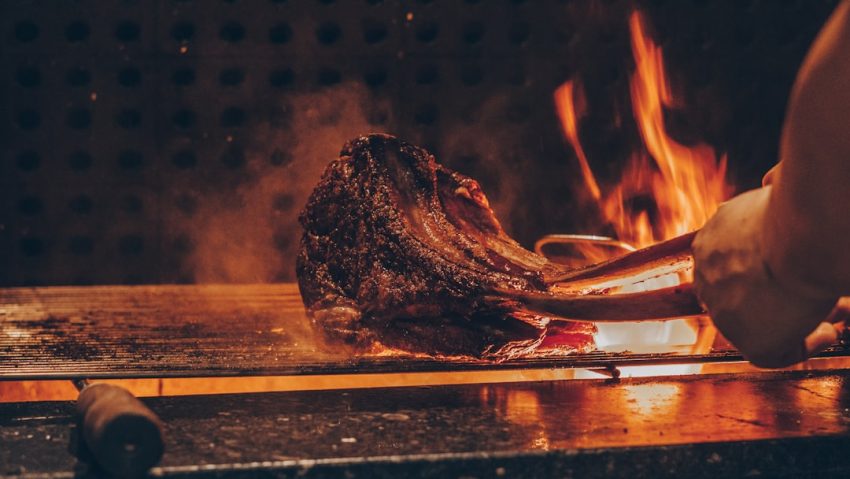This comprehensive guide delves into the art of preparing the perfect BBQ brisket, focusing on understanding the cut's unique structure and marbling for optimal flavor and texture. It covers everything from choosing the right cut (whole packer brisket with good marbling) to low-and-slow cooking methods at 225°F – 250°F (107°C – 121°C), using either dry-aging or wet marination techniques, and resting the meat properly post-cooking. The text also offers serving suggestions and pairings to elevate the BBQ brisket experience.
Unleash the mouthwatering aroma of perfectly marinated brisket cooked low and slow – a true masterpiece in the realm of barbecue. This ultimate guide takes you on a journey through the art of brining, seasoning, and smoking this hearty cut of meat to achieve tender, juicy perfection. From understanding the brisket’s unique characteristics to mastering the science behind low-and-slow cooking techniques, we’ll equip you with the knowledge for crafting your own mouthwatering BBQ brisket recipe.
- Understanding Brisket: The Cut and Its Characteristics
- The Science Behind Low and Slow Cooking
- Choosing the Right Marinade: Ingredients and Flavor Profiles
- Dry-Aging vs Wet Marination: Which Is Better?
- Setting Up Your Smoker for Optimal Brisket Results
- Cooking Brisket: Techniques and Tips for Success
- Resting and Slicing: How to Achieve Tender, Juicy Brisket
- Serving Suggestions and Pairings for Your Perfect Brisket Meal
Understanding Brisket: The Cut and Its Characteristics

Brisket, a cut from the beef chest, is a favorite among BBQ enthusiasts for its rich marbling and intense flavor potential. When properly prepared, it becomes the star of any grill or smoker session. In the context of a bbq brisket recipe, understanding this cut’s characteristics is key to success. Brisket has two distinct muscle groups: the lean “first cut” or “flat,” and the fattier “second cut” or “point.” This marbling, while initially making the meat appear less appealing, is what contributes to its incredible juiciness and depth of flavor during low-and-slow cooking methods.
The slow cooking process allows these flavors to develop and meld together, resulting in a tender, melt-in-your-mouth brisket that’s truly a masterpiece when sliced thin. This cut requires patience and precision—a testament to its reputation as a challenging yet rewarding BBQ challenge. Whether you’re aiming for a classic Texas-style or a unique twist on a bbq brisket recipe, appreciating the characteristics of this beefy cut is the first step towards achieving mouthwatering results.
The Science Behind Low and Slow Cooking
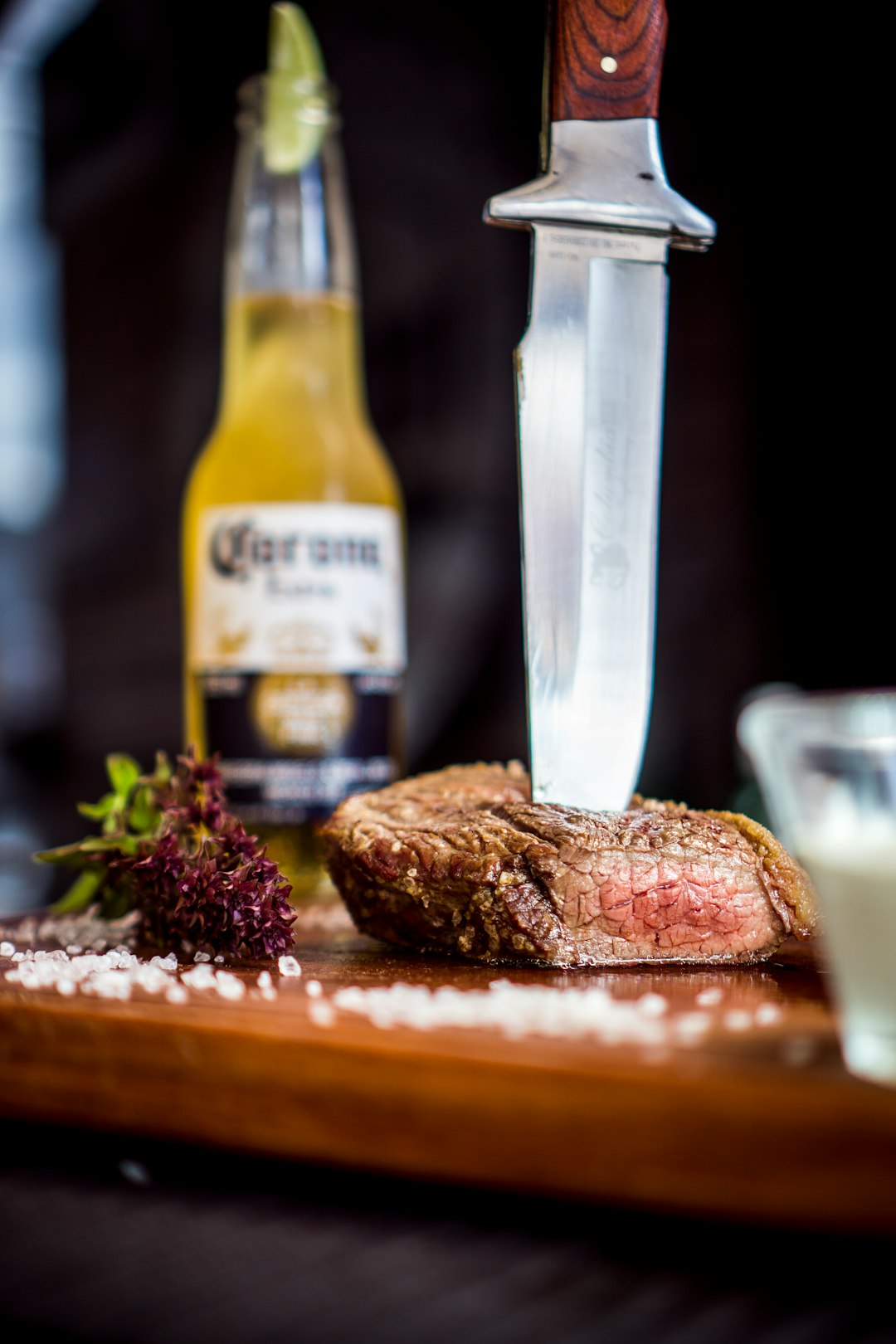
Choosing the Right Marinade: Ingredients and Flavor Profiles
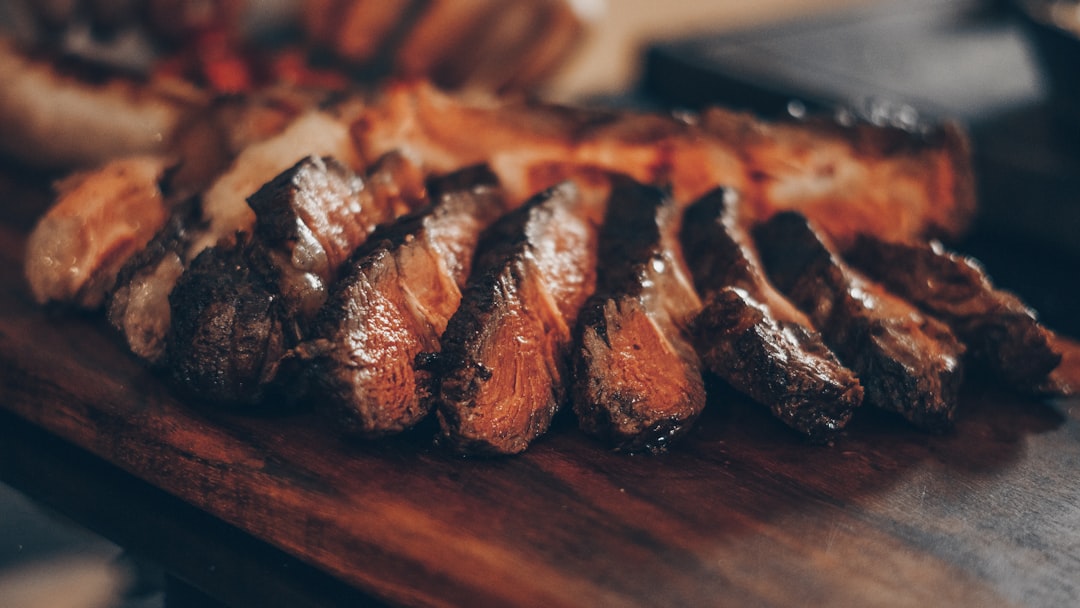
Dry-Aging vs Wet Marination: Which Is Better?
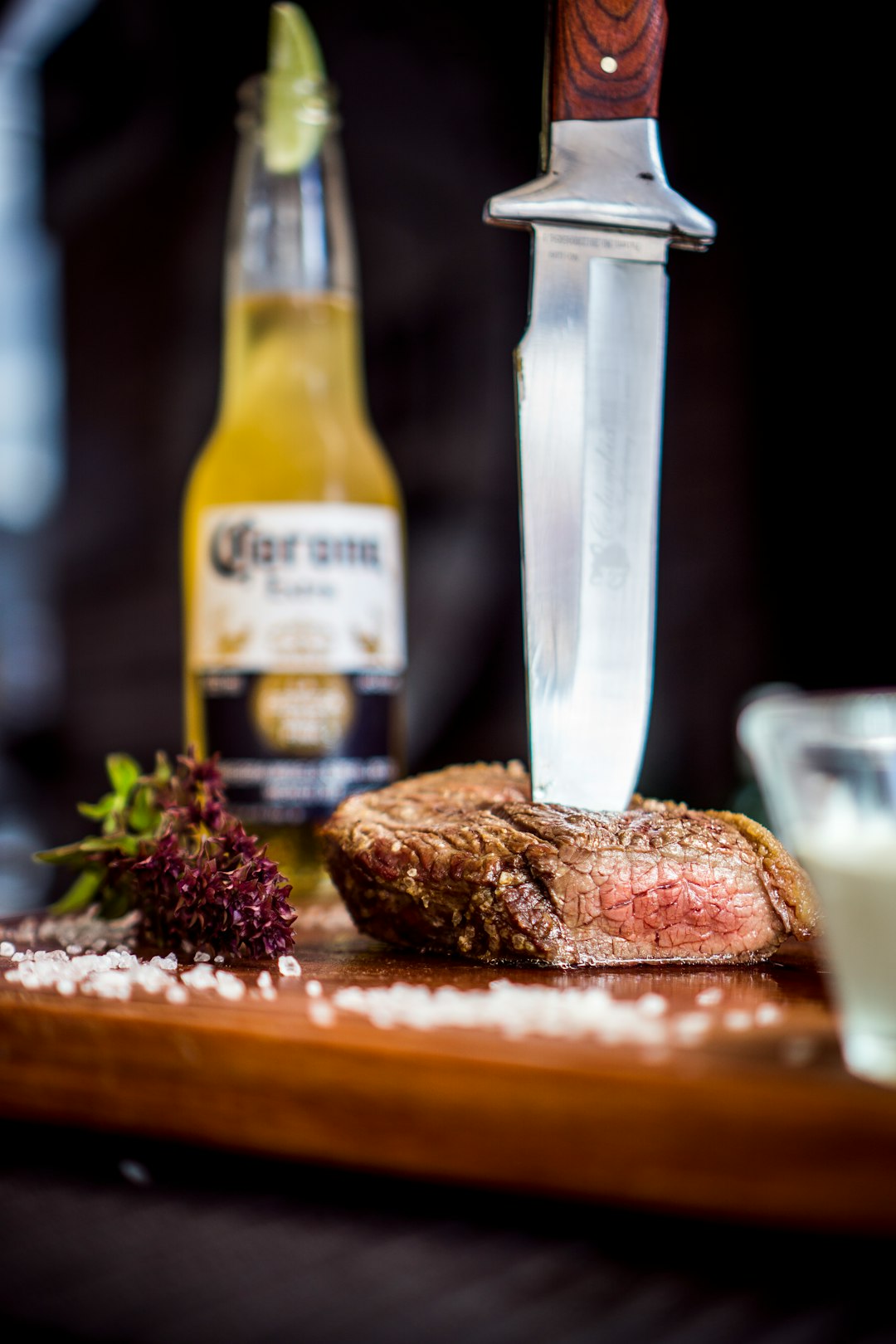
When it comes to preparing BBQ brisket recipes, the marination process is key to achieving that mouthwatering, tender result. But there’s a debate among barbecue enthusiasts: dry-aging vs wet marination. Both methods have their advocates and can produce exceptional brisket, but they differ significantly in approach.
Dry-aging involves storing the meat at controlled temperature and humidity levels, allowing natural enzymes to break down proteins and fats over time. This process develops complex flavors and a beautiful, caramelized exterior. On the other hand, wet marination uses a solution of salt, spices, and other ingredients to coat the brisket, which helps break down tough connective tissues and infuses the meat with moisture and flavor. Wet marination is often quicker and easier, making it popular among those seeking a faster BBQ brisket recipe. However, dry-aging can take days or even weeks, resulting in a more intense, nuanced taste profile that’s highly prized by many barbecue purists.
Setting Up Your Smoker for Optimal Brisket Results
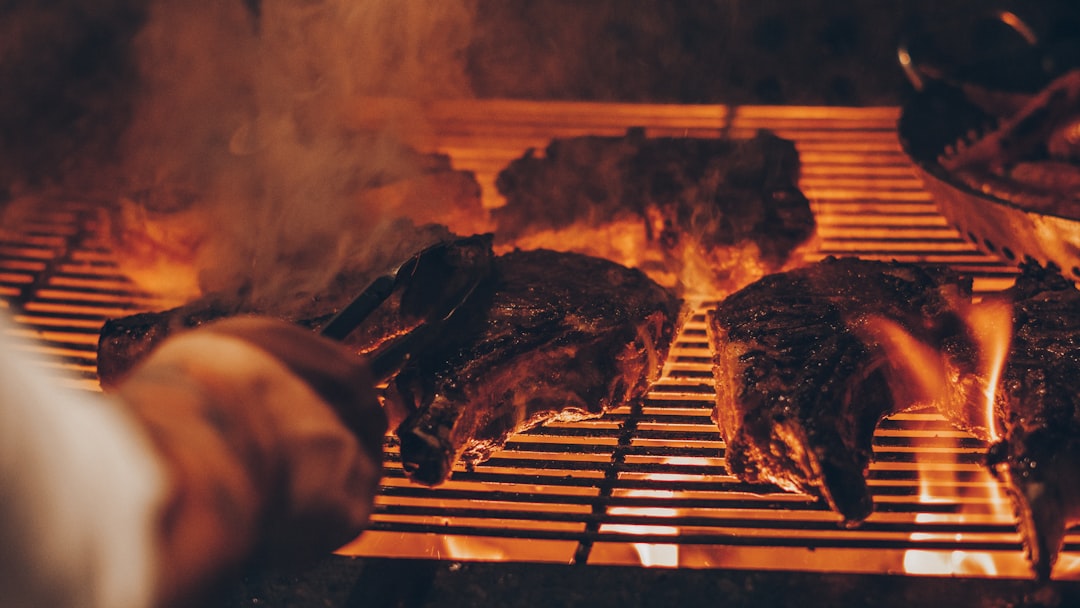
To achieve optimal results with your BBQ brisket recipe, setting up your smoker is a crucial step. The key is to maintain a consistent and low temperature, typically between 225°F and 250°F (107°C to 121°C). This slow cooking process allows the collagen in the meat to break down, resulting in tender, juicy brisket. Use a smoker that offers excellent heat control and good air circulation; this ensures even cooking without hot spots. Wood chips or chunks add flavor, so choose a type suitable for beef, like hickory or mesquite, and add them gradually throughout the cooking process.
Prepare your brisket by removing any excess fat, leaving a thin layer for moisture and flavor. Season generously with a dry rub of salt, pepper, and other spices according to your preferred BBQ brisket recipe. Place the meat on the smoker, making sure it’s positioned in the center for even heat distribution. The process will take several hours, so be patient; checking the temperature regularly will help you track progress without overcooking.
Cooking Brisket: Techniques and Tips for Success
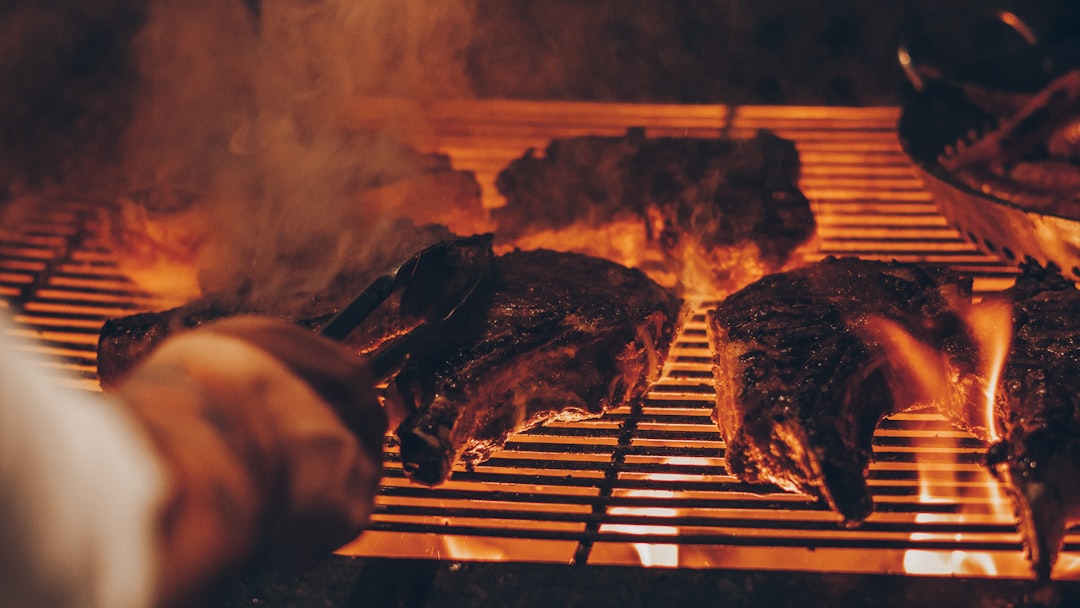
Cooking brisket is an art that requires patience, precision, and a deep understanding of smoke and heat. When it comes to crafting the perfect BBQ brisket recipe, the key lies in low-and-slow cooking methods. This technique allows the meat to break down and become incredibly tender, locking in flavors from the marination. It’s essential to maintain a consistent temperature between 225°F to 250°F (107°C to 121°C) throughout the process. This slow cooking time can range from 8 to 16 hours, depending on the size of the brisket.
Choosing the right cut is crucial; look for a whole packer brisket with good marbling. The fat cap provides flavor and moisture, ensuring your brisket stays juicy. During cooking, use a combination of direct heat and indirect heat to control temperature. Regularly baste the meat with your favorite BBQ sauce or oil to keep it moist and add that extra layer of deliciousness. Remember, successful brisket is all about time, patience, and attention to detail—a true test for any BBQ enthusiast.
Resting and Slicing: How to Achieve Tender, Juicy Brisket

After slow-cooking your brisket to perfection, the next crucial step in achieving a mouthwatering BBQ brisket recipe is resting and slicing. Once cooked, transfer the meat to a cutting board or a clean surface, and let it rest undisturbed for 15-20 minutes per pound. This resting period allows the juices to redistribute throughout the meat, ensuring that every bite is juicy and tender.
When ready to slice, against the grain is the recommended method. Cutting with the grain can result in tough slices, while cutting against it yields softer, more flavorful pieces. Using a sharp knife, carefully slice the brisket into thin strips or point cuts, ensuring you follow the natural lines of the meat. Resting and slicing correctly will not only enhance the overall texture but also make serving and enjoying your BBQ brisket recipe even more satisfying.
Serving Suggestions and Pairings for Your Perfect Brisket Meal
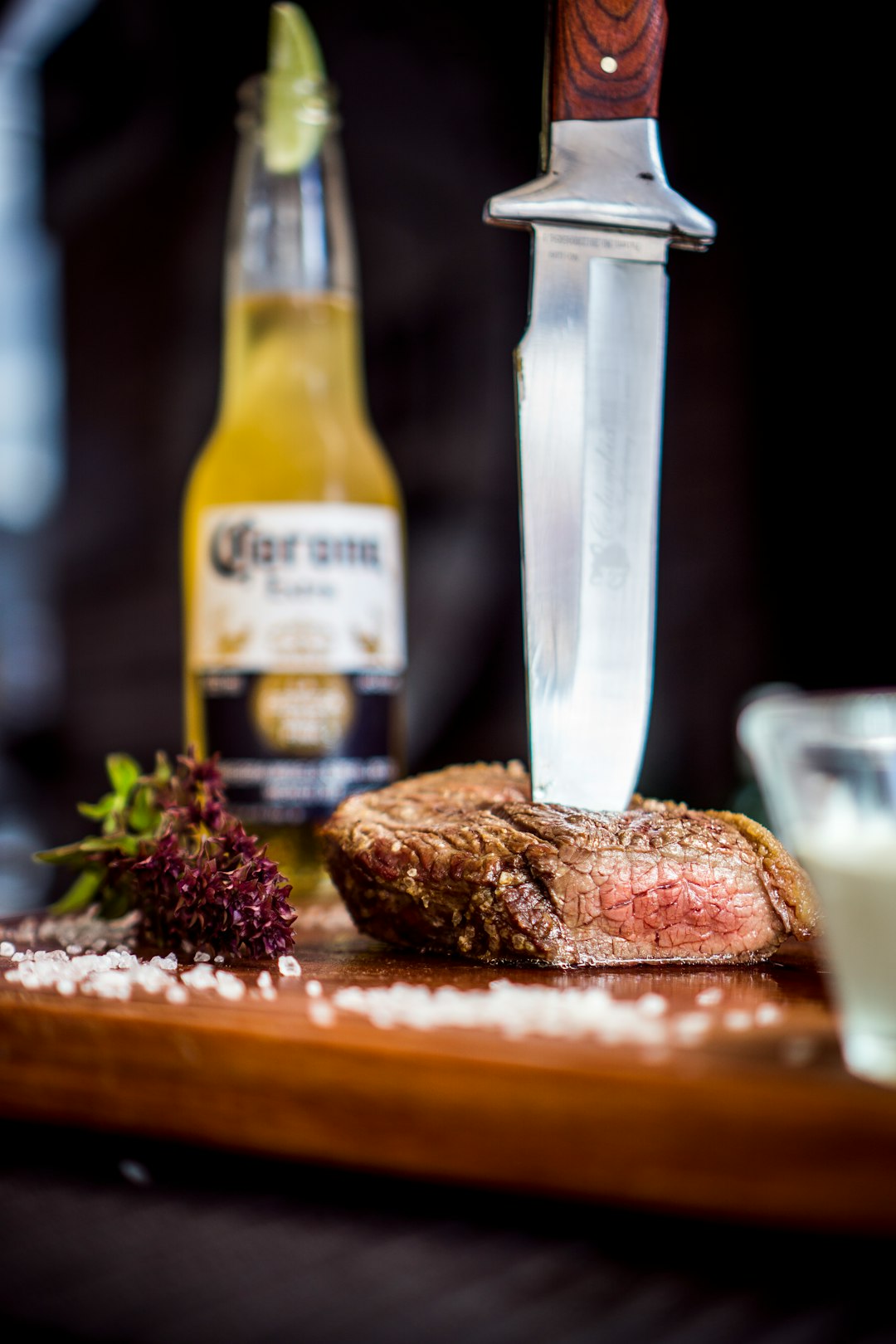
When it comes to serving your mouthwatering marinated brisket, there are endless possibilities for a delightful dining experience. Start with a simple plate of sliced brisket, allowing its natural juices to enhance each bite. Accompany it with classic sides like creamy coleslaw, crispy potato salad, or buttered cornbread for a traditional BBQ feast. For a more indulgent touch, consider adding grilled onions, jalapeños, and a drizzle of barbecue sauce.
Wine and beer enthusiasts will find the perfect pairings for this hearty dish. A rich, oaky Chardonnay complements the brisket’s bold flavors, while a robust red like Cabernet Sauvignon or a well-crafted craft IPA can enhance the marinated meat’s complexity. Don’t be afraid to experiment; the right combination of foods and beverages can transform your BBQ brisket recipe into an unforgettable culinary journey.
